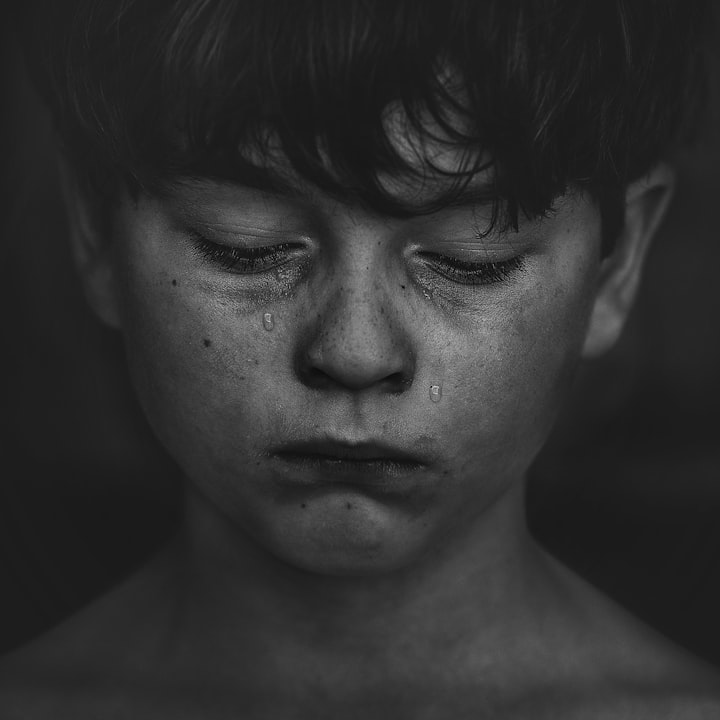Violent Fights Are Back At School
And in-person learning has only been in session a short time.

Introduction
As a family engagement influencer, I speak my truth about issues related to parenting, education, and families. I raise awareness about relevant issues that some individuals cannot discuss because doing so would be politically incorrect. In doing so, I offer suggestions and solutions based upon my family engagement expertise and vast experiences as an educator. My passion also comes from being a mother.
My reflections extend throughout the last school year when remote and hybrid learning remained the norm for many students everywhere. Regardless of parental and student engagement in learning, everyone had so much pity on learners because of the mental health struggles they encountered while being educated at home.
Parents and students alike shared their anxieties associated with learning in isolation. While I know some of the mental health problems that many students had were a manifestation of past diagnosis, I also know that many of these issues were self-diagnosed. And, with all the sad stories that circulated about students who dealt with so much personal distress because they sat in front of a computer screen for several hours a day, I doubt that their parents ever took them to a physical, behavior, or mental health provider for any type of evaluation or treatment. That’s just my opinion.
As you figured out, the tone of this story is extremely cynical. My reason is very simple. I am fed up. I am fed up with all the students who attend school for one purpose and one purpose alone. The students I am referring to enter the doors of their school to create chaos. They walk into classrooms with the exclusive purpose of bullying classmates, resisting the authority of teachers and school officials, and finding a hangout spot that they can disrupt.
The students that I am referring to are not those who have documented conditions that result in the manifestation of behaviors that require extra services, interventions, and supports. I am referring to the students who are capable of making appropriate decisions at school but choose to advance their agendas in classrooms and throughout the campus instead.
Without having any data to support the claim that follows, it would not surprise me if some of the students who were so distraught about not attending in-person classes are now some of the ones tearing up classrooms by engaging in violent fights and creating major disruptions.
While I have written many stories about the problems associated with dangerous students who attend schools and terrible student behaviors in a lot of learning environments, I must address it again. That is the purpose of this story.
This Has Been Going On From Day One

Neither the pandemic nor the abrupt school closures failed to change anything for students who attend school in fear because of dangerous and explosive classmates. Most of the children and young people who consistently follow rules and attend school to learn cannot because of their out-of-control peers.
Remote learning did nothing to help teachers who are passionate about providing students with exemplary learning experiences who cannot now. This is because the severe problems with student disruptions that occurred before the health crisis began resumed as soon as the school and classroom doors opened at the beginning of the school year in many learning environments.
Regardless of all the school-wide training educators participate in and get certified in related to classroom management, trauma-informed care, crisis response intervention, and so much more, these problems persist in a lot of places. And no matter how many times teachers and school leaders teach, communicate, practice, and reinforce expectations, rules, and procedures associated with appropriate behavior to their students, little or no change can be observed in many schools among the offending student.
A misconception continues to prevail as it relates to this problem. This belief existed when I worked in at-risk school environments as the principal, too. There is the unfair assumption that terrible student conduct is the exclusive fault of classroom teachers, building administrators, and superintendents. Individuals who believe this are misinformed about the abilities educators have as it relates to either controlling or stopping horrendous student behaviors.
Here are a few reasons why this is so.
1. For some students, even the most severe disciplinary consequences administered by the school have little or no effect.
2. Even though schools have a Code of Student Conduct which outlines student behavior expectations and consequences, restrictions exist within many school districts regarding how and how often students, especially those from some demographics, can be disciplined. For example, students who receive special education services and have an IEP (Individualized Educational Program) have specific disciplinary limitations and are protected by federal law. There are also initiatives in schools to avoid giving the harshest form of consequence to Black and Brown students, especially males.
3. Individuals who are not educators as well as those who are untrained do not understand the appropriate ways to interact with all students when they misbehave, including those who have conditions related to the behaviors they displays. I remember how I was the subject of criticism when I worked with students with emotional and social disorders as a principal. While people expected me to get in their faces screaming at them when they misbehaved, I typically dealt with them in a calm manner consistent with their outlined in their behavior plans. These misinformed people viewed me as weak because I did not conform to their standards that included loud and harsh disciplinary responses.
4. Like adults, students have a will. Educators do not possess magical powers to change their hearts, minds, and spirits so that they suddenly embrace all things good at school. Educators can only use best practices to teach appropriate behaviors, provide relevant supports and interventions to them, and celebrate their successes. Simply stated, principals and teachers are only able to implement humanized systems to remediate student behaviors.
5. Many times entities like a board of school directors, disgruntled parents who are displeased with student behaviors, and community members are quick to refer to students of educators within a school as “your students”. This connotation is often used to reinforce the belief that students at risk behaviorally are the exclusive responsibility of educators who work with them and that they singularly own their behavioral deficits. Educators have not given birth to these students nor have they assumed the exclusive role in raising them.
The individuals who need to play the biggest role in the life of students so that they assume the greatest level of responsibility in teaching appropriate behaviors are often excluded from aggressive efforts to prevent and correct despicable conduct at school.
So, What About the Parents?

I advance the belief that mothers and fathers as well as primary caregivers are their child’s first teachers. Therefore, they must assume responsibility for teaching their children how to behave at school.
Many times parents are disconnected from their child’s educational life because they maintain the belief that everything related to their child’s education is the responsibility of the school. A lot of parents simply enjoy their freedom instead of playing any type of role in their child’s learning. But, there is a harsh reality about student conduct while they attend school.
It’s all about home training. When mothers, fathers, and caregivers lack appropriate parenting skills and defer their job of teaching their children behavioral boundaries home to the school employees, community entities, and other people, educators are left with huge and unending challenges.
Educational policymakers and school leaders must be willing to aggressively and boldly acknowledge the relationship between poor parenting and poorly behaved students at school. Instead of being hesitant or fearful to deal with parental deficits because they do not want to offend them or make them angry if they expect to see changes in students, they must confront their parental failures.
I offer the following recommendations that school and district officials can use to initiate as well as lead family engagement efforts.
1. Create a family engagement action plan that encompasses the unique needs within schools for a designated period. Hold all educators accountable for remaining committed to the plan.
2. Develop robust family engagement policies that accentuate parents as partners throughout their child’s educational journey. High expectations must be communicated and maintained relevant to parents being active members of their child’s educational team. Also emphasized must be parental responsibilities and accountabilities associated with working with school personnel to ensure that all students adhere to the Code of Student Conduct. Parents should become aware of the full range of consequences that will be imposed against their children for violating school and classroom rules.
3. Schools must establish family engagement as a critical initiative within all schools. Resources must be devoted to this area so that adequate funding sustains the program. Qualified and knowledgeable professionals must lead district-wide efforts to build parental involvement and participation in their child’s education. Programming should reflect this commitment through the development of universal activities to support, educate, and empower parents. Examples of this include the development of parent training curricula and events consistent with this, the implementation of in-person or virtual home visits, parent workshops to provide resource connections, and celebrations to acknowledge parental participation in programs.
In addition to school officials leading family engagement efforts, more needs to happen.
This Is What I Believe Has to Take Place

When I began my work with family engagement 13 years ago, my initial effort involved holding parents accountable by law to participate in their child’s education. I grew to realize that before that could happen, educators needed to do a better job building authentic relations with parents. That is why I wrote the book entitled “Repair the Broken Pieces: A System to Awaken Positive Relations Between the Family and Educational Provider Through Engagement Fusion”.
I believe that many schools have a long way to go build positive relationships with parents, especially those who are diverse. And that is the reason why I continue to advance my mission to ignite family engagement in education.
Despite the need for progress to be made in this area, more needs to be done. I believe that laws need to be developed that not only hold parents accountable for participating and remaining involved in their child’s education but for participating in a parent training program before their child enrolls in preschool or kindergarten. I further believe that such efforts should be coordinated between school districts and departments of social services.
I think limitations should exist. More specifically, indicators could be developed to identify at-risk parents who need to receive training. It is my opinion that requiring these parents to participate in training sessions will enable them to develop the required skills that will help their children learn how to adhere to behavioral boundaries at home, within the community, and at school.
I see this as the only solution to solving the problems with out-of-control student behaviors at school.
The Final Word

School leaders and teachers cannot solve the problems associated with continuous acts of student misconduct alone. Parents must play an active role in providing help.
Positioning mothers, fathers, and caregivers as team members represent the best way to establish them as partners. The only way this can happen is if schools create robust family engagement programs.
As schools everywhere make improvements with home and school relations, educational policymakers need to work with legislators and politicians to create family engagement laws. This should include the identification of at-risk parents who must be required to participate in training programs before their children enroll in school.
If you enjoyed this story, consider sharing it on your social media platforms. Also, please consider adding a tip to help fund my work to increase family engagement in education.
I am also a content creator on YouTube. Be sure to visit my "Ignite Family Engagement" channel to view my videos related to the role of parents in education. Here is the link:
Thank you.
This story was originally published on Medium.com in ILLUMINATION-Curated.
About the Creator
Dr Deborah M Vereen
As a mom, former family and consumer sciences teacher, and school administrator, I write about parenting, family, and education topics. Visit www.Drdeborahmvereen.com to view my work as a family engagement influencer & my YouTube channel!






Comments
There are no comments for this story
Be the first to respond and start the conversation.